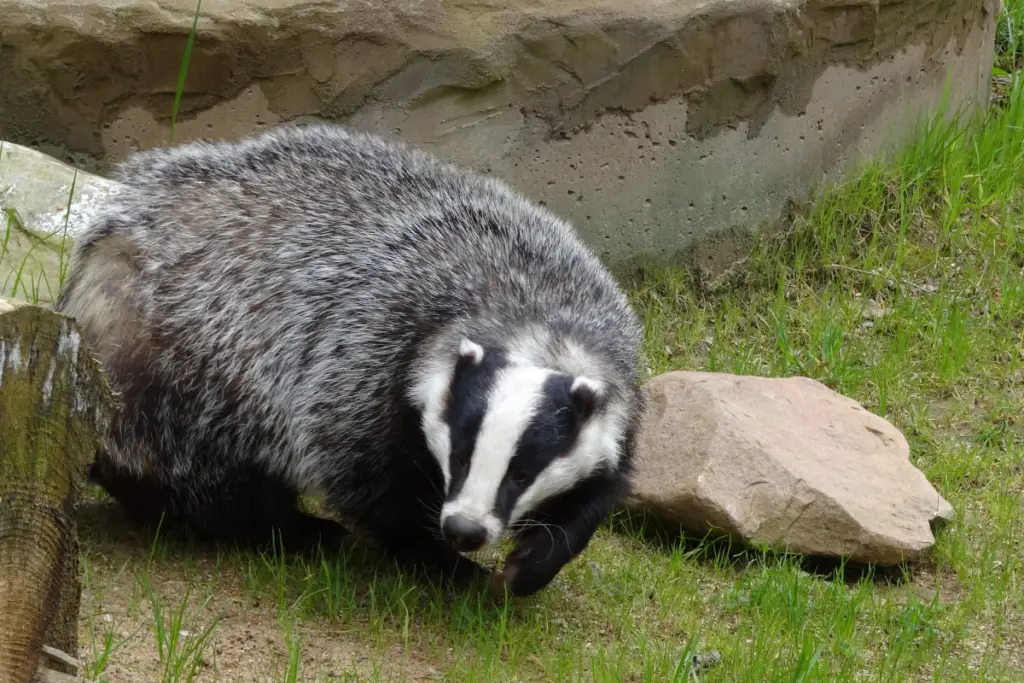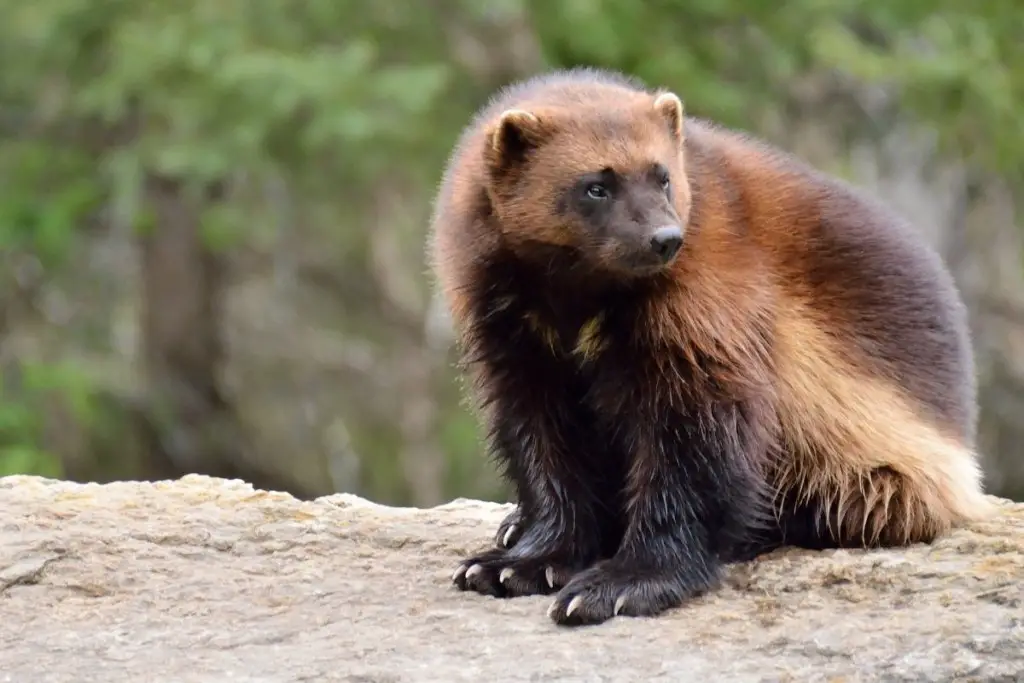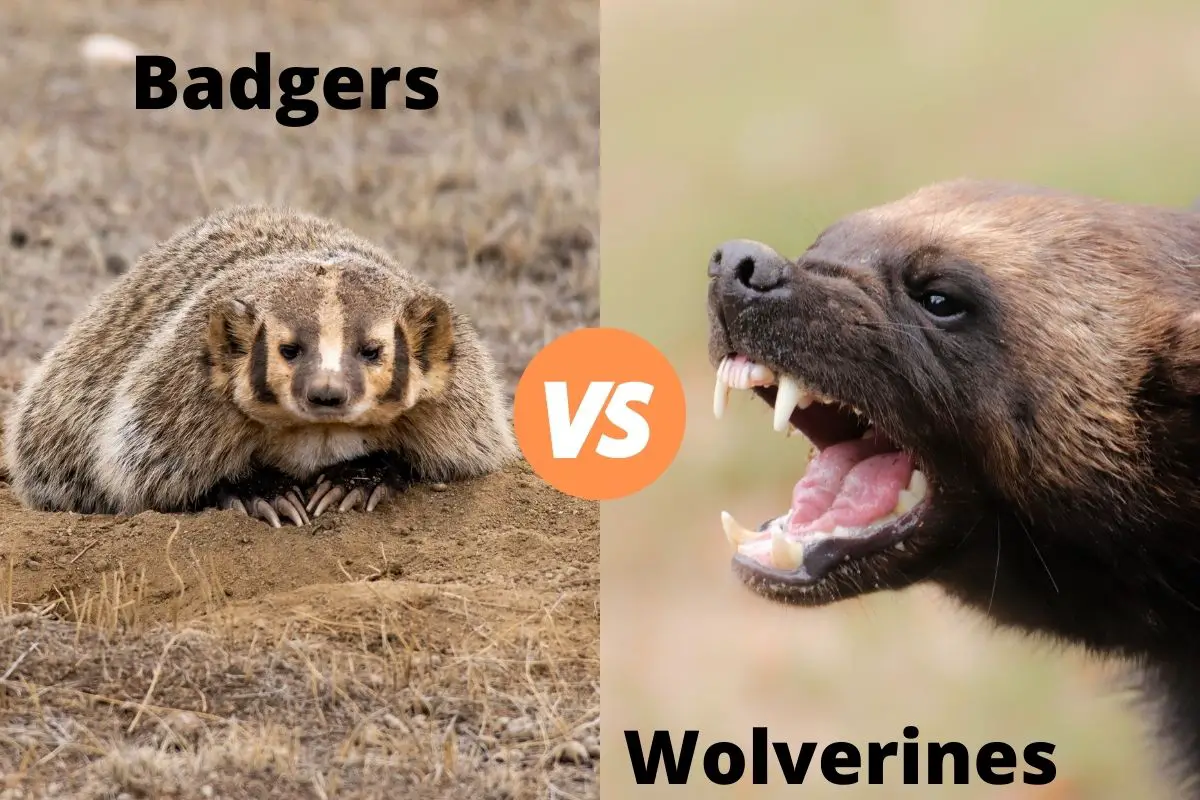There are many similarities and differences between a badger and a wolverine. In this comparison, we are going to directly analyze attributes from both of these wild animals and try to explain some of the most important differences from each species.
Wolverines are commonly larger than Badgers and can be considered slightly better at hunting. Badgers on the other hand are much better at digging, especially underground. Both species are capable of climbing various objects in the wilderness, but badgers are usually a little bit more capable in terms of climbing.
Despite being different, the badger and the wolverine have a lot in common. We will compare several of these attributes and how they factor in their lifestyle in the wilderness. We’ll also compare their population numbers by location and region, which can help you gain a better understanding of where these animals primarily live.
See our article for Where Do Badgers Live
Are Badgers and Wolverines the Same Thing?
Both of these animals are related, and share some of the same qualities. However, wolverines are bigger and have a lot more muscle than a badger. They are both in the mustelid family and are carnivorous. Other animals in the mustelid family include weasels, otters, ferrets, martens, minks, and more.
Mustelids vary in size and shape, so it’s no wonder that the badger is very different from the wolverine in its size and description. You can always tell a badger apart from a wolverine from the white and black stripes on its face.

See our article for What Do Badgers Look Like
Badger vs Wolverine | Comparison
Badgers and wolverines share several similar skills and traits. They also live in similar territories in North America. From their lifestyle to their lifespan, we’ll cover everything that you need to know about badgers and wolverines in the section below.
Lifespan
Badgers have a lifespan between 7 and 20 years, depending on their local environment. Wolverines have a similar lifespan, usually living between 7 and 15 years in the wilderness. In captivity, both wolverines and badgers generally live towards the longer end of the estimated lifespan, but in the wilderness, their lifespans are usually much shorter.
Hunting Skills
Wolverines have been recognized for being exceptional hunters, sometimes even hunting animals multiple times larger than themselves. Badgers are also great at hunting, but their skill set is primarily used underground. They are great at digging and hunting underground, especially rodents.
Climbing Skills
Wolverines and badgers are both capable of climbing various objects in the wilderness. While it’s not their most common activity, you might find either species climbing rocks or trees.
Location
Wolverines are commonly found in North America, particularly in specific regions of Canada. There are also smaller populations in regions near Alaska and the mainland United States.
Badgers prefer to live in open grasslands and primarily live in the Great Plains region of North America. They can also be found in Europe and smaller variations of their species can also be found in Asia.
Population Estimates
The wolverine population is not well known and can only be estimated. They are not currently considered an endangered species, but their population is estimated to be below 50,000. Canada’s wolverine population is believed to be stable at or around 20,000 wolverines.
Wolverines are snow-dependent and live primarily in the northern regions of North America. In the lower 48 states of America, there are estimated to be less than 400 wolverines. Source.
Badgers have a relatively stable population and are also not considered to be endangered at this time. With population numbers that are relatively stable for both species, there’s no real threat to either animal in the immediate future. In England alone, there are almost 500,000 badgers, whose population has grown dramatically since the 1980s. Source.

Comparison Chart | Badger vs Wolverine
Here’s an in-depth comparison chart of some of the most significant differences between a badger and a wolverine. It’s important to understand these differences if you are trying to identify either of these animals in the wilderness.
| Badger | Wolverine |
| Badgers are excellent hunters and climbers. They primarily hunt underground by using their exceptional digging ability to find rodents and other small animals. Wolverines are known for being capable of hunting animals much larger than them. They also are excellent at climbing but prefer to remain grounded most of the time. | |
| Badgers have an average lifespan of a decade in the wilderness but may live longer in captivity. | Wolverines live between 7 and 12 years on average but also may live longer in captivity. |
| You can find badgers in various grassland regions of North America and Europe. Some smaller variations of their species can be found in Asia. | Wolverines are primarily found in regions of Canada and Alaska. Some are also found in Russia and Europe. |
| Badgers are a little bit smaller than wolverines and are much better at digging and hunting underground. | Wolverines are a little bit larger than badgers, but they aren’t as skilled at digging. |
Badger Vs Wolverine Size
Badgers are smaller than wolverines, weighing around 14-15 pounds, while wolverines weigh 20 to 55 pounds. Badgers are around 2.5 ft in length from head to the body, with a tail of 4-5 inches. Wolverines can be as long as 3.5 in length, with a tail of 7 – 10 inches!
Both of these animals have a lot of power for being so small, however, the wolverine is much stronger, with more muscles and power for predation.
See our article for Are Badgers Dangerous here.
FAQ
It’s rare, but wolverines may eat a badger in the wilderness. Badgers may also eat wolverines, although they usually prefer much smaller animals.
It’s extremely unlikely that a badger or wolverine would be capable of sufficiently attacking a human. They are much more likely to attack a small household pet or wild animal than a human being. As a human, there’s no real reason to fear an attack from either a wolverine or badger.
Badger and wolverine populations are estimated to be stable and neither species is currently considered to be endangered. The future of both populations depends on human development and how rapidly their local environments deteriorate due to external factors like climate change and globalization.
- Hero Farm Dog Survives Epic Battle with Coyote Pack - December 9, 2024
- The 10-Minute Bedtime Routine That Changed My Dog’s Sleep Forever - November 29, 2024
- Creating a Safe Space for Nervous Pets: Your Guide to Pet-Friendly Havens - November 25, 2024

